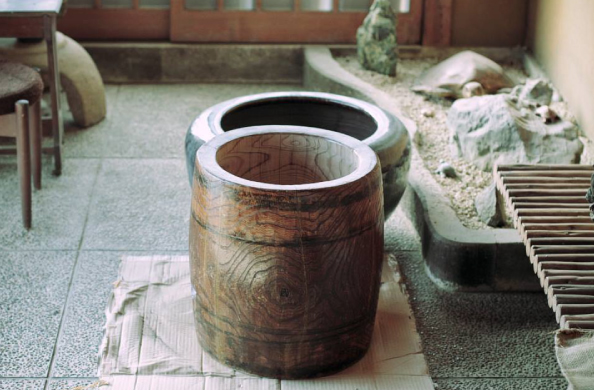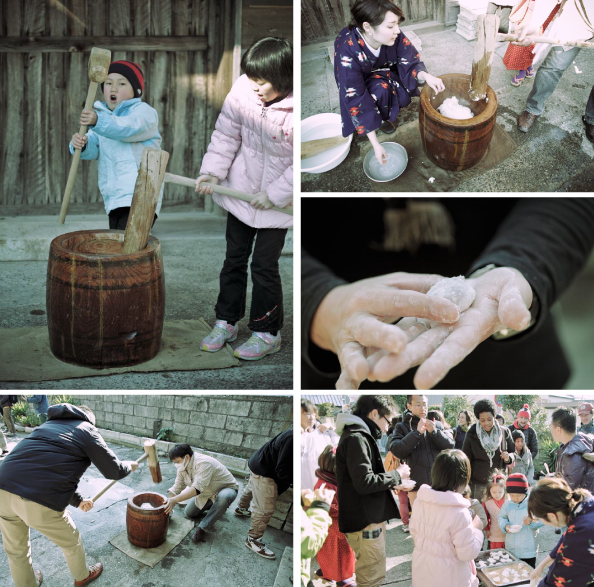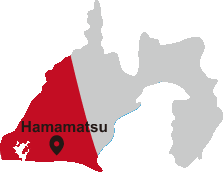Omochi-tsuki, rice cake making, is a New Year's tradition in Japan
Mochi is made from rice and has a sticky and stretchy texture when you eat it. People in Japan have been eating these rice cakes since ancient times for all sorts of different celebrations like New Year, festivals and other auspicious days. These traditions have been passed on for generations.
Nowadays most mochi are prepared automatically, by machines and people no longer have it for celebrations anymore. The tradition of eating it on New Year's however, has remained deeply rooted in culture. When the old year ends, all sorts of stands are lined up, selling different shapes of mochi. This year many families and stores made their own mochi in the traditional way, mochi-tsuki.
HOW TO make mochi rice cakes

Photo : Jesse Robbins ( studio green point )
First you must steam the rice and pound it, until it becomes sticky and the rice grains lose their shape. Then you continue pounding it over and over again until it is completely smooth. Now you have a fine sticky rice paste. Mochi is something different than the normal rice, the staple food in Japan. Its main characteristic is the stickiness obtained after the rice has been pounded down. "Kaesu" is the process of turning the rice upside down, so that all sides of the rice are pounded equally. This makes the mochi even smoother.
People who turn over the rice are called "Kaeshi-te" and people who pound the rice are called "Tsuki-te". The synchronization between these two people is very important in making mochi. The "Kaeshi-te" has to continuously wet his hands so that the rice paste will not stick to him. Bam! The rice must be pounded with considerable force to make mochi well. "Tsuki-te" is pressing the rice with the heavy mallet. When the rice is completely smooth and homogenous, the paste is shaped into nice rice cakes, mochi.
The finished rice paste is taken from the container and carried to another place. The sticky rice paste is then dusted with flour called "rice cake powder" and shaped into long, round pieces called mirror rice cakes. Many people look forward to the first taste of the freshly pounded rice cakes. It tastes amazing! It's also very popular to eat mochi with grated radish, soy flour or sweet red bean paste, but of course you're welcome to find your own perfect combination.

"Pettan! Pettan!" goes the rhythmical sound of mochi (sticky rice cakes) being pounded. Along with the audible thumps and thuds, encouraging shouts emerge from the surrounding crowd while parents lend a helping hand to their children, allowing them the ability to experience the pleasures of hammering down mochi. The charm of pounding mochi is that it is an event that can be enjoyed together by many people at the same time. It is truly a welcoming and delicious Japanese cultural tradition.

Photos : Jesse Robbins ( studio green point )
Location : Fuan [風杏] (Japanese)
2019.10.7 update
Content may be subject to change after publication. Please also note that we are not accountable for loses and damages that may occur as a result of said changes.
Content may be subject to change after publication. Please also note that we are not accountable for loses and damages that may occur as a result of said changes.





